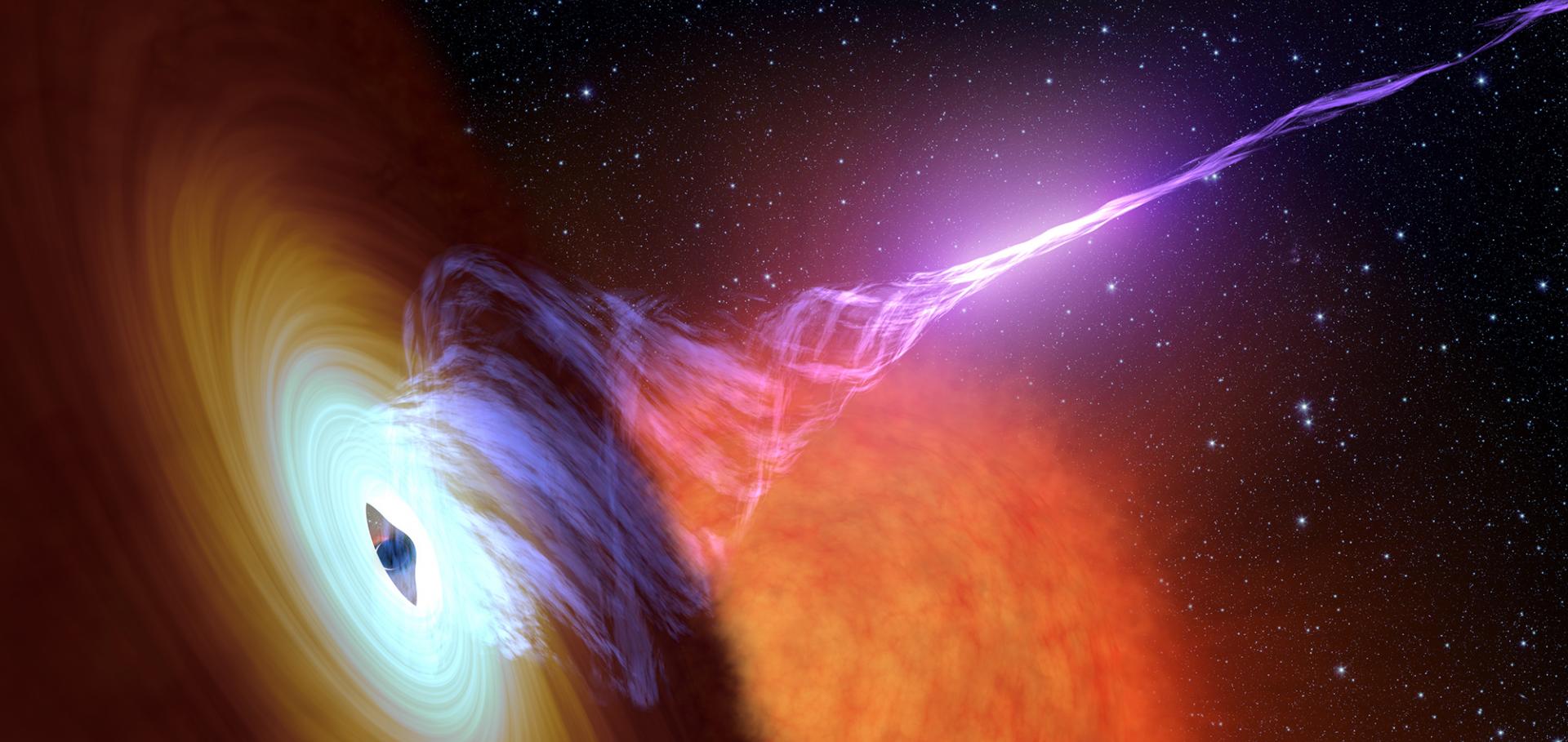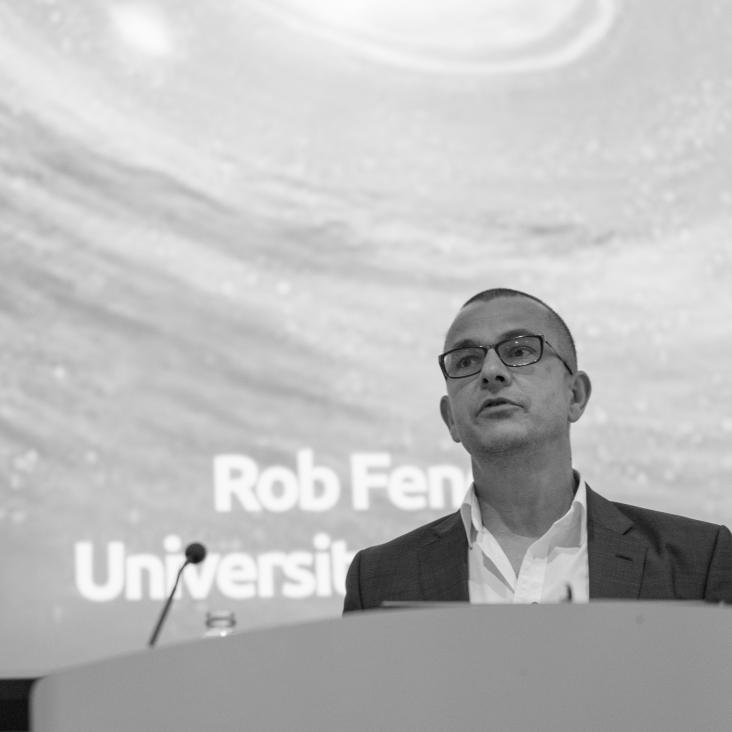The first resolved imaging of milliarcsecond-scale jets in Circinus X-1
(2011)
Is there really a dichotomy in active galactic nucleus jet power?
Monthly Notices of the Royal Astronomical Society 417:1 (2011) 184-197
Abstract:
To gain new insights into the radio-loud/radio-quiet dichotomy reported for active galactic nuclei (AGN), we examine radio loudness as a function of Eddington ratio for a previously published sample of 199 AGN from five different populations. After initially considering radio loudnesses derived using total radio luminosities, we repeat the investigation using core radio luminosities only, applying a previously established mass correction for these core luminosities. In both cases, for Eddington ratios <1 per cent, Fanaroff-Riley type I and broad-line radio galaxies are on average more radio-loud than Seyfert and low-ionization nuclear emission-line region galaxies. However, the distribution of radio loudnesses for the mass-corrected, core-only sample is much narrower than that of the clearly bimodal total radio loudness distribution. The advantages and disadvantages of using core- or lobe-dominated radio luminosity as a measure of instantaneous jet power are discussed. We furthermore compare the core and total radio luminosities for the entire sample, as well as illustrating the importance of the mass term by comparing the AGN with a sample of black hole X-ray binaries. We conclude that if the mass-corrected core radio luminosity is a good measure of jet power, then black hole spin may have considerably less impact on jet power than previously reported, or that our sample does not include the extremes of spin. If the spread in jet power is small, then we suggest that characteristics of the ambient environment and/or the radio source age could be equally as important in producing a radio-loudyradio-quiet dichotomy seen in total radio luminosity. © 2011 The Authors Monthly Notices of the Royal Astronomical Society © 2011 RAS.FRATs: A search for Fast Radio Transients with LOFAR
AIP Conference Proceedings 1357 (2011) 331-334
Abstract:
The FRATs project aims to detect single dispersed pulses from Fast Radio Transients with LOFAR in real-time. These pulses can originate from pulsars, RRATS and other classes of known or unknown objects. To detect these pulses a detection algorithm is being run on an incoherent beam from the different LOFAR stations. This incoherent beam has a wide field of view and can be formed parallel to other observations, such that both can run at the same time. A precise localisation is done by storing the data from each dipole. This gives an all-sky coverage with a spatial resolution of order arc seconds. The source is identified by making high time-resolution images. This is explained in more detail with preliminary results illustrating the methods. © 2011 American Institute of Physics.Pulsars and fast transients with LOFAR
AIP Conference Proceedings 1357 (2011) 325-330
Abstract:
The LOw Frequency ARray is the first of the next generation of radio telescopes to be completed. It uses large numbers of small receptors and vast computing and data transport capabilities to achieve a high degree of sensitivity over large fields of view. It uses two different types of receptor to enable it to observe over the frequency range 10-260 MHz. Here we report on some of the capabilities of this telescope for pulsar and fast transient research. We also present some results of the commissioning work that we have been carrying out which highlight the exciting potential of this telescope. These include simultaneous imaging and pulsar observations, simultaneous observations spanning 30-8000 MHz, a large number of known pulsars detected in the high band and the detection of PSR B0809+74 down to a frequency of 16 MHz. © 2011 American Institute of Physics.Testing the jet quenching paradigm with an ultradeep observation of a steadily soft state black hole
Astrophysical Journal Letters 739:1 (2011)


